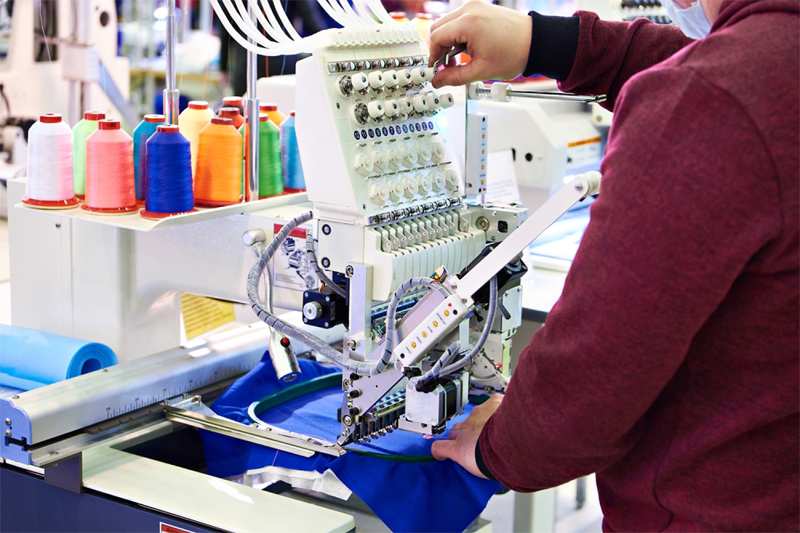
Converting Artwork into Embroidery Digitizing: A Digitizer's Perspective
Embroidery digitizing is a fascinating and intricate craft that bridges the gap between art and technology. It's the process of transforming intricate artwork into a format that can be interpreted by computerised embroidery machines. For those new to the world of embroidery digitizing, it might seem like a complex and mysterious task. In this comprehensive guide, we will delve deep into the digitizer's perspective on converting artwork into embroidery digitizing.
Understanding the Basics of Embroidery Digitizing
Before we dive into the nitty-gritty details, it's crucial to grasp the fundamentals of embroidery digitizing. At its core, this process involves translating a two-dimensional design into a series of stitches and patterns that an embroidery machine can replicate on fabric. Here's a simplified breakdown:
1. Artwork Selection:
The journey begins with selecting the artwork or design that you want to embroider. This could be anything from a logo, illustration, or intricate artwork.
2. Digitizing Software:
A digitizer uses specialized software to convert the artwork into a digital embroidery file. This software allows for precise control over stitch types, densities, and colors.
3. Digitizing Process:
During digitizing, the digitizer carefully maps out each stitch, specifying the type, direction, and length. This step requires a keen eye for detail and an understanding of how different stitches will interact on fabric.
4. Machine Compatibility:
Once the digital embroidery file is ready, it needs to be compatible with the specific embroidery machine being used. The file format and settings must align with the machine's capabilities.
5. Embroidery Production:
Finally, the digitized design is loaded into the embroidery machine, which stitches it onto the chosen fabric, creating a beautiful and intricate embroidered pattern.

The Artistry Behind Digitizing
Embroidery digitizing is not a purely technical process; it's also an art form. A skilled digitizer approaches their work with a deep appreciation for aesthetics and a meticulous attention to detail. Here are some key aspects that highlight the artistry involved:
1. Color Selection:
Choosing the right colors for an embroidery design is an art in itself. A digitizer must carefully match the colors in the digital file to the available thread colors. This requires a keen sense of color theory and an understanding of how colors will appear on different fabrics.

2. Stitch Types and Direction:
Each stitch type (e.g., satin, fill, running) serves a specific purpose in the design. The digitizer must decide which stitch types to use and the direction in which they should run to achieve the desired texture and appearance.
3. Density and Underlay:
Controlling the density of stitches is crucial for achieving the right balance between coverage and flexibility. Digitizers use underlay stitches strategically to provide stability and ensure that the final embroidery looks crisp and professional.
4. Complex Designs:
Embroidery isn't limited to simple shapes and patterns. Skilled digitizers can recreate intricate designs with shading, gradients, and fine details. Achieving this level of complexity requires both technical expertise and artistic vision.
The Role of Digitizing Software
Digitizing software is the digitizer's primary tool, and choosing the right software is essential. Different software packages offer various features and capabilities. Here are some common features that digitizers rely on:
1. Vector Conversion:
Many digitizing software packages can convert vector artwork (created in programs like Adobe Illustrator) into embroidery files. This simplifies the initial design phase.
2. Stitch Editing:
Digitizers can fine-tune individual stitches, adjusting parameters such as stitch length, density, and direction. This level of control is essential for achieving the desired texture and appearance.
3. Automatic Digitizing:
Some software includes automatic digitizing functions that can convert simple images into embroidery files. While convenient, these tools may not produce the same level of quality as manual digitizing.
4. Simulation and Preview:
Preview features allow digitizers to see how the design will appear on different fabrics and at various sizes. This helps identify any issues that need adjustment before production.
Challenges and Common Pitfalls
While embroidery digitizing is a rewarding craft, it comes with its share of challenges and potential pitfalls. Here are some of the common issues that digitizers face:
1. Complex Artwork:
Highly detailed or intricate artwork can be challenging to digitize, as it requires a deep understanding of how stitches interact and overlap. Achieving a balance between detail and clarity is key.
2. Size and Scale:
Embroidery designs often need to be resized to fit different items, from small logos on hats to large patterns on jackets. Resizing can impact the design's integrity, so careful adjustment is crucial.
3. Thread Breaks and Tension:
Embroidery machines can be finicky, and thread breaks or tension issues can lead to imperfect results. Digitizers must consider these factors and create designs that minimize such problems.
4. Fabric Variations:
Different fabrics can behave differently during embroidery. Digitizers need to account for these variations and adjust their designs accordingly to ensure consistent quality.
Tips for Successful Embroidery Digitizing
To excel in embroidery digitizing, consider the following tips:
1. Invest in Training:
If you're new to digitizing, invest in training programs or courses to build your skills. Practice is essential to becoming proficient.
2. Stay Updated:
Keep up with the latest advancements in digitizing software and embroidery machines. Technology evolves, and staying current is vital.
3. Collaborate:
Work closely with your clients or customers to understand their vision and expectations. Communication is key to delivering the desired results.
4. Test and Revise:
Always test your designs on different fabrics and at various sizes. Make adjustments as needed to achieve the best results.
5. Learn from Mistakes:
Don't be discouraged by mistakes. Learn from them and use them as opportunities to improve your skills.
Conclusion
Embroidery digitizing is a blend of art and technology that requires both creativity and technical expertise. It's a craft that allows digitizers to transform artwork into beautiful, tangible creations. By understanding the basics, appreciating the artistry involved, and mastering the tools and techniques, anyone can embark on a rewarding journey into the world of embroidery digitizing. Whether you're a beginner or a seasoned pro, the digitizer's perspective offers insights into the intricate and fascinating process of converting artwork into embroidery digitizing.

0 Comments